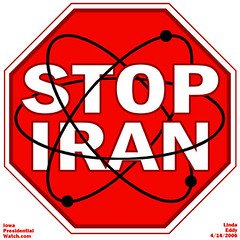Rare earth elements, also known as rare earth metals, are a group of heavy metals that retain their physical properties at high temperatures. The body responsible for chemical nomenclature, the International Union of Pure and Applied Chemistry, considers 17 elements to be part of the group, including 15 ytterium and scandium lanthanoids (also known as lanthanides). However, other groups (including the researchers, who did not include ytterium) use a slightly different definition.
Rare earth elements are used for everything from nickel metal hydride batteries in hybrid cars to fibre-optic telecom cables, military hardware, solar panels, wind turbines, compact fluorescent lighting, mobile phones, computers, the manufacturing of super conductors and high energy magnets and petroleum refining.
====================================================
Assuming the world is still here in January 2013 (Mayan and various scientific predictions/prognostications about astral alignments and fatal solar winds), the discovery of ample rare earth deposits removes Communist China's stranglehold on our ability to continue manufacturing essential high end and every day technology items.
====================================================
A map published with the study shows rare earth element deposits in the Pacific Ocean "less than two metres deep".
NOTE: THIS MEANS THE RARE EARTH ELEMENTS ARE LESS THAN TWO METERS BELOW THE OCEAN BOTTOM MUD NOT AT SHORE LINES.
China produces 97 per cent of the world's supply of rare earth elements. (David Gray/Reuters)
Abundant, rich deposits of materials used to make modern electronics have been found in the deep sea, suggesting that China could lose its tight control over the global supply.
China currently controls 97 per cent of the world's production of rare earth elements and the metal yttrium, which are used in energy-efficient batteries and power sources for devices such as flat-screen televisions, electric cars and smartphones.
As demand for the elements grows, China has been hiking taxes and putting restrictions on exports. Prices of rare earth elements have increased roughly 700 per cent over the past decade.
It turns out that those elements are so abundant on the bottom of the ocean that the mud covering just one square kilometre of ocean floor in the Pacific Ocean could supply one-fifth of the current annual world consumption, according to a new study published online Sunday in Nature Geoscience.
| MOSTLY IN INTERNATIONAL WATERS! |
Researchers led by Yasuhiro Kato at the University of Tokyo's department of systems innovation also found that extracting the elements from the mud was easy — almost all of them came out after being mixed with solutions of hydrochloric or sulphuric acid that are considered dilute (roughly five times the concentration of acid in your stomach). Much of it is found in the accessible surface layer of mud.
Scientists had previously known that rare earth elements and yttrium are found in some kinds of deep-sea mud, but they knew little about the distribution of those deposits.
Kato and his colleagues drilled and sampled more than 2,000 sediments from the sea floor at 78 sites around the Pacific Ocean, and found especially high concentrations of rare-earth elements and ytterium in the eastern South Pacific, west of Peru and Ecuador, and the central North Pacific, near Hawaii.
The deposits in the eastern South Pacific are nearly twice as rich as the land deposits in China. They are also much higher in heavy rare earth elements — the kind that are more important in technology products — than those in China.
At the moment, China has only one third of global reserves of rare earth elements, but most of the world's reserves of heavy earth elements. Deposits of light rare earth elements are found in other countries, such as the U.S. and Australia. In Canada, exploration is underway in several provinces.
In April, China hiked taxes on exports of heavy and light rare earth elements to 60 yuan ($8.90) and 30 yuan ($4.45) per tonne respectively. The previous December, China had cut exports by a third to 30,000 tonnes a year.
Afghanistan also is rich with the elements, but they lack the infrastructure for extraction. (Until we hand over to the Taliban and China finances extraction? Or has the long known but untapped Neptune deep sea mud availability torpedoed investment?)














No comments:
Post a Comment